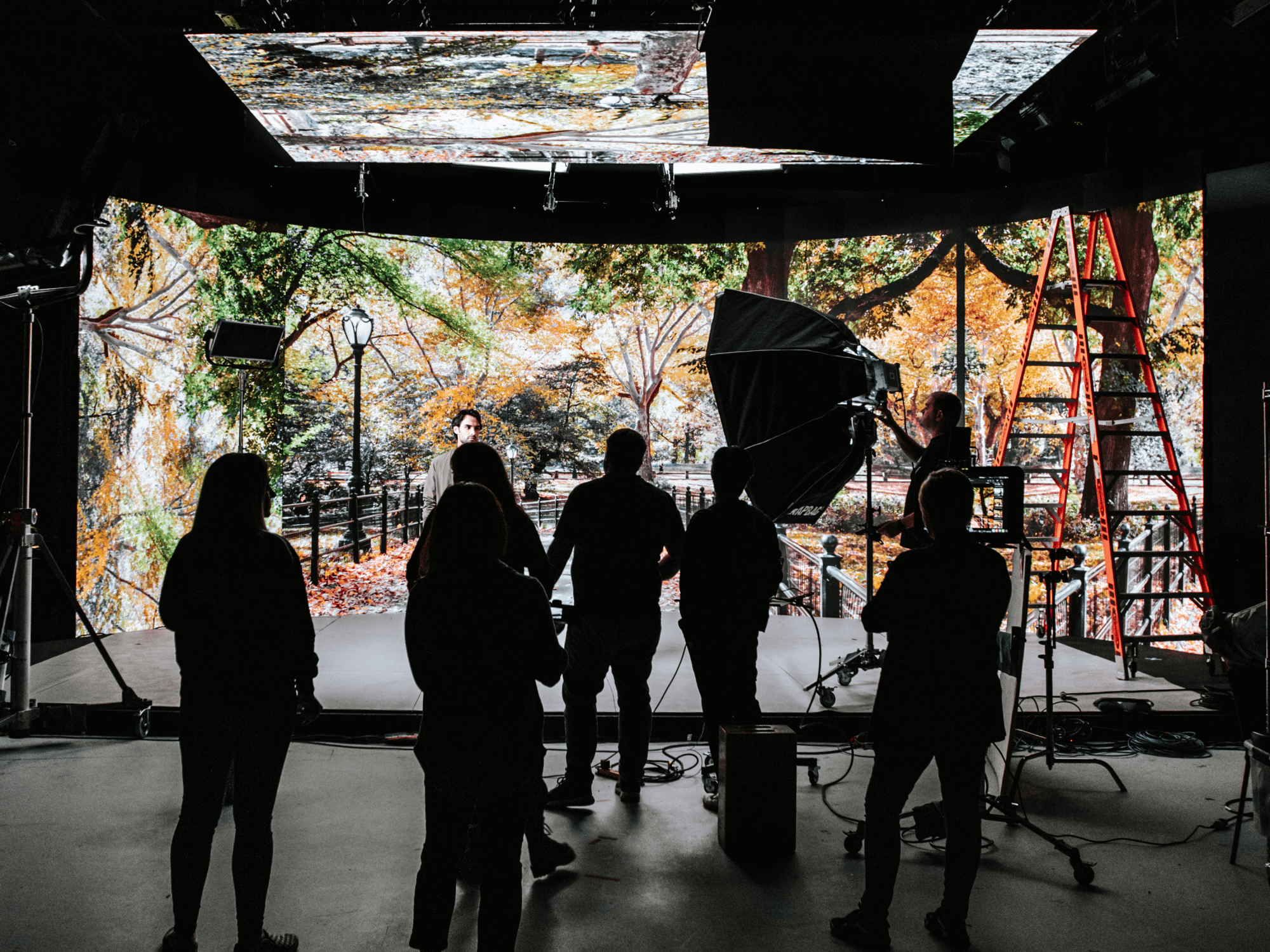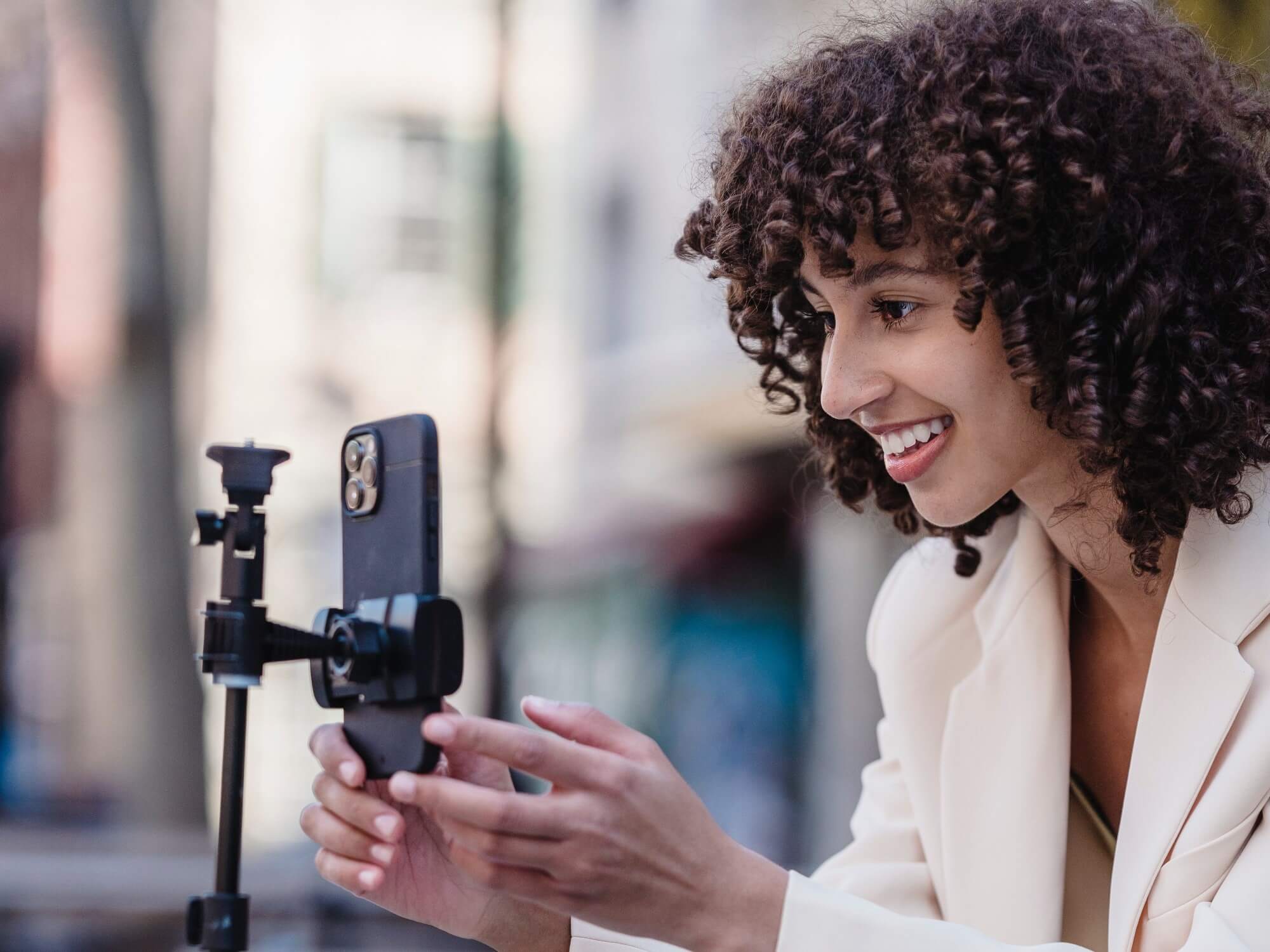Three Video Trends Set to Explode in 202318 min read

It’s often said that “the more things change, the more they stay the same.” This sentiment could easily be applied to our predictions for exploding trends in video production for 2023. Whether we’re discussing fantastical backgrounds for the most highly produced videos, reusing or repurposing footage for an emerging distribution form, or taking a do-it-yourself approach to creating content for your brand, the trends we will explore below feel at once fresh and even futuristic, while evoking production dynamisms of the past.
Virtual Production/LED Walls
Virtual production has been a part of film and video production almost from the beginning. Matte paintings, rear projection, and chroma keying (blue/green screen) have all been utilized to create believable environments for actors to inhabit, without the need to find a suitable real-world location or build an unreasonably large and expensive set. A more recent addition to this stable of tools is the volumetric virtual production studio. These studios feature video walls and ceilings composed of modular LED panels, which function similarly to large televisions. They can display video (similar to rear projection) or virtual sets created in Unreal Engine, a popular 3D video game design software which is used to create photo realistic landscapes. Until recently, these massive screens were only used on big budget movie and television productions like “The Batman” and Disney’s “The Mandalorian,” but as the technology becomes more affordable, smaller markets are gaining access.
Volumetric virtual production studios—or “LED walls”—can offer many advantages over older technologies or location shooting. Rear projection often requires a camera shot to be “locked down” so that a change in camera position does not destroy the illusion of depth or perspective. LED walls, when paired with Unreal Engine, can be synced with the camera so that when it moves, the background adjusts based on camera position and lens choice. Chroma keying offers many of the same benefits of LED walls, such as the ability to insert virtual environments, but often lacks the ability to record the result in real time, resulting in higher post production costs. Moreover, chroma keying can result in “spill,” which is the reflection of the green or blue background off of skin or shiny props. Spill can be incredibly time consuming to avoid on set or remove in post. LED walls don’t just avoid spill, the way their virtual sets reflect off objects looks natural. LED walls can also be used to simulate outdoor sets without the risks that shooting on location can impose, such as inclement weather and changes in light and time of day. In fact, these environmental changes can be easily dialed in using Unreal Engine, so your “Golden Hour” evening shot can take place at any time of day and for as long as necessary. There may be occasions where chroma key is still necessary, and in these instances, the LED walls can be quickly set to selectively insert a green background.

Image courtesy of Golden Hour Studios in Grand Rapids.
One more major advantage of using a volumetric virtual studio is the opportunity for your talent and cameraman to see and interact with the surrounding environment. No longer must they imagine and react to an unseen object or landscape. Your actors will see exactly what the director intends for them to see, and your cameraperson will be able to compose the shot in precisely the way he or she sees fit.
Short/Multi-purposed Video and Silent Video
The rule-of-thumb when creating corporate video has generally been to keep your program to 3 minutes or less, and almost never over 5 minutes. While that is generally still the case, there are good reasons to plan your video so that it can be broken into smaller segments, especially if your audience skews younger. Research shows that the average social media user spends nearly an hour a day scrolling through short video clips on platforms like TikTok and Instagram Reels. In general, the younger your audience, the more time they spend on these platforms. A fantastic way to reach this audience is by segmenting your larger video into bite-sized, highly specific segments that target their interests, and distributing these videos on short-form platforms both organically and through paid, targeted advertising. This can be especially effective with testimonial videos, which can often be edited down to brief but highly effective soundbites.
That said, another emerging trend is “silent video,” which may or may not actually be silent. In this context, “silent video” refers to short videos that include forced subtitles or closed-captioning. According to Verizon Media, nearly 70% of US consumers view video with the sound off in public places, and 25% view video with the sound off in private places. Additionally, 80% of viewers are more likely to watch a video to the end if subtitles are included. These are huge numbers! While sound is still a vital part of video production, it’s clear that, for marketing purposes, captioning your short video is no longer a matter of accessibility, it’s a necessity!
User-Generated Content
While it may seem counter-intuitive, user-generated content is often more likely to convert viewers than professionally produced marketing content. This original, brand-specific content can cover a wide variety of topics including product overviews, tutorials, interviews, vlogs, and brand stories. User-generated content may lack polish, but it often comes across as honest, transparent, and credible. An un-flashy product overview may convince a viewer that your product is sturdy and reliable. Short interviews with your brand experts can impart a sense of forthrightness and integrity.

The wide availability of high-quality video and audio equipment, especially modern mobile phone cameras, has democratized the world of video production and allowed almost anyone to try their hand at creating original video content. If you’re willing to spend a few hundred dollars on video lights and a decent-sounding lapel microphone and spend a little time learning how to use them, you can make incredibly good looking and sounding video, perhaps even rivaling professionally produced content. The downside is that now you (or one of your employees) are spending time creating content instead of doing other necessary work. If this is the case, know that your marketing company or chosen video production partners can assist you in creating, editing, and curating your user-generated content, as well as helping to distribute it across your various web presences.
DVS Is Here to Help
At DVS we strive to implement current trends while looking ahead to the future of video production and marketing. Our credible and competent experts are always ready to help you take your business to the next level. Contact us today!